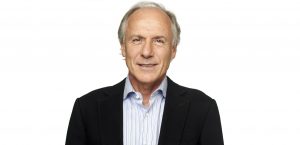As Science meets Parliament approaches, Australia’s Chief Scientist Dr Alan Finkel writes of what can be achieved when Governments walks with science hand in hand.

Australia’s Chief Scientist
December 1915 was a landmark time in our nation’s history.
Percy Grainger and Dame Nellie Melba were setting America alight with their musical talents. Mrs Edith Widdis was basking in the glow of having just become the first female owner to win the Melbourne Cup. South Australia’s William and Lawrence Bragg became the first, and only, father and son duo to be awarded the Nobel Prize. And, on December 22, the same day Australians learnt of the successful withdrawal of ANZAC troops from the beaches of Gallipoli, the course of Australia’s scientific endeavours was changed forever when Prime Minister Billy Hughes announced his intention to set up a national scientific institution, the forerunner to the CSIRO.
Hughes noted, “We must walk with science hand in hand; we must seek its aid in order to achieve victory; we must enlist its service in order to prepare to meet the conditions which will arise after the war. We must rise to this great occasion, turning a frightful calamity into a lasting good”.
This was the Little Digger’s challenge to us and, for over 100 years, we have set about answering that call – producing a great outpouring of discovery, enterprise and achievement that has benefited every facet of Australian society.
Far from being static, sterile agencies, our government-supported scientific institutions continue to be dynamic, living entities. They are a call to action, a proud expression of our tenets as a society, and a constant reminder of our determination to foster curiosity, invest in education and value science as fundamental to our national mission.
Science met Parliament, and the offspring was progress.
In the 1950s, work at a precursor of today’s Defence Science and Technology Group led to the invention of the aeroplane black-box. In the 1970s, it was at the CSIRO that the initial work to improve Wi-Fi technology was undertaken. In the 1980s, it was a small company called Cochlear, selected by the Department of Productivity to receive a $4 million start-up grant that developed the bionic ear. And in the 1990s, helped in part by ³Ô¹ÏÍøÕ¾ Health and Medical Research Council research grants, the human papillomavirus vaccine – the world’s first cancer vaccine – was developed and brought to market.
This is what can be achieved when Governments “walk with science hand in hand”, and it is a legacy that continues today.
Whether it be Geoscience Australia’s Alice Springs Ground Station – with its antennae proudly adorned in Indigenous artwork – continuing to help discover new mineral and energy resources, ensure our water security, and respond to natural disasters such as bushfires, cyclones and floods.
Or the emerging future Superstars of STEM, such as Dr Joanne Lackenby at ANSTO, Professor Asha Rao at RMIT, and Dr Kudzai Kanhutu at the Royal Melbourne Hospital.
Or the ground-breaking research led by Professor Mimi Tang, pioneering the combination of a probiotic with peanut-protein immunotherapy, to develop a revolutionary treatment for children with peanut allergies.
All across Australia, a new generation of innovators – the most diverse and educated we have ever known – continue to open up new worlds of possibility and transform all our lives for the better.
With all this history, all this potential, I encourage you all to join me at this year’s Science meets Parliament, where new opportunities are waiting to be revealed, and it is you who Australia is waiting to follow.
Science holds a promise like no other in human endeavour, but it requires more than a flash of brilliance to translate an imaginative idea into tomorrow’s thriving industry.
It takes time and hard work and patience; and it warrants the support of a nation.
Support for the promise depends on scientists shining a light on the future benefits that science can deliver, so that politicians can see them in all their glory among the myriad of other priorities clamouring for attention.
It requires creating a pathway for scientists and politicians to advance together and grow together, to make space for discussion within the wider ecosystem in which policy is developed, and to foster a mutual understanding and respect of each other.
It is why this event is so important, and why my office is running a Science Policy Fellowships program: offering a full year’s experience for mid-career scientists that leads into opportunities to work directly in government departments.
The pride we feel as scientists in our work and in our history – its hope and ingenuity, daring and determination – must motivate us to reinspire the society we live in today.
It must motivate us to cultivate the insatiable hunger for progress that has taken Australia to new frontiers, and to reawaken the clarity of vision and leadership Billy Hughes saw all those years ago.
What Hughes understood was the timeless character of the people he led: our resilience, our boldness, our distinctly Australian ability – demonstrated time and time again throughout history – to defy expectations, to rise to any challenge, to not settle for what is, but reach for what might be.
And he knew that we, as scientists, can do the big things. We can push boundaries, expand human knowledge, and make the world anew; so long as we take the people with us.
As he proclaimed in 1916, “science thus familiarised to the people will help them to clear thinking; to the rejection of shams; to healthier and better lives; to a saner and wider outlook on life”.
This is our mission.
Thank you to Department of Industry, Innovation and Science for being the Principal Supporter of Science meets Parliament 2019.







